Navigating the labyrinthine lore of Stephen King’s magnum opus, The Dark Tower series can be a challenging endeavor. Straddling multiple genres including fantasy, science fiction, horror, and western, this epic saga provides readers with a thrilling journey through a complex multiverse.
To facilitate your journey through King’s masterwork, we have curated two key reading lists: one following the original publication order, and another in chronological sequence. Each approach offers its unique insights and interpretations of the series. Read on to unravel the path that suits your preference.
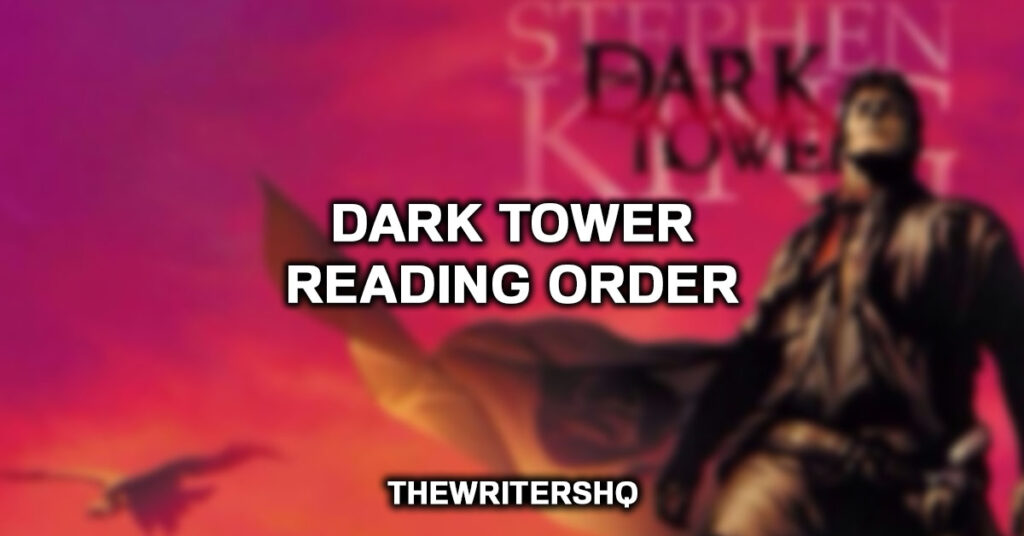
The Dark Tower Reading Order by Publication Date
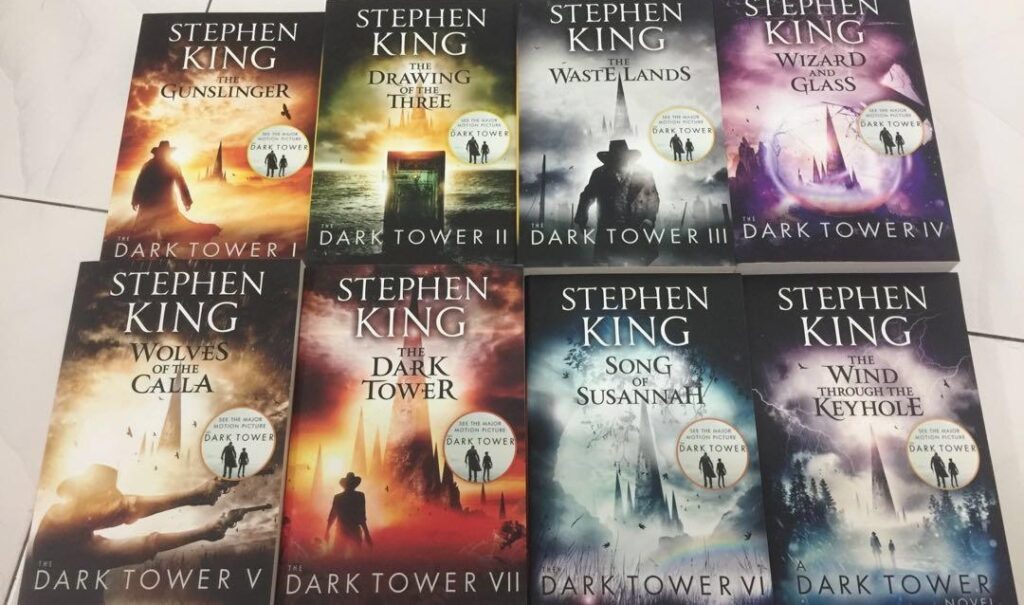
- The Gunslinger (1982)
- The Drawing of the Three (1987)
- The Waste Lands (1991)
- Wizard and Glass (1997)
- Wolves of the Calla (2003)
- Song of Susannah (2004)
- The Dark Tower (2004)
- The Wind Through the Keyhole (2012) – This is a stand-alone novel set between books 4 and 5, but it was published after the completion of the series.
The Dark Tower Books in Chronological Order
- The Gunslinger (1982)
- The Drawing of the Three (1987)
- The Waste Lands (1991)
- Wizard and Glass (1997)
- The Wind Through the Keyhole (2012)
- Wolves of the Calla (2003)
- Song of Susannah (2004)
- The Dark Tower (2004)
What is the Dark Tower series about?
Stephen King’s The Dark Tower series is a multi-layered epic that unfolds across various dimensions of a complex multiverse. The saga follows Roland Deschain, the last gunslinger, in a world that has “moved on”.
Drawing on a myriad of inspirations, from Arthurian legend to spaghetti westerns, King’s narrative is a blend of various elements that meld together to create a unique universe.
Roland is on a quest to find the Dark Tower, a mythical structure believed to be the nexus of all universes. Along his journey, Roland encounters various friends and foes, confronting both personal and physical obstacles.
Quick Fact: As the series progresses, it becomes evident that the fate of many worlds hinges on Roland’s quest. This sprawling, intricate narrative encapsulates themes of destiny, sacrifice, and the eternal struggle between good and evil.
From its poetic language to its memorable characters, The Dark Tower is a series that resonates with readers long after the final page is turned. Whether you choose to follow the publication or chronological order, the journey through the Dark Tower series is a profound literary adventure that awaits.
1. The Gunslinger (1982)
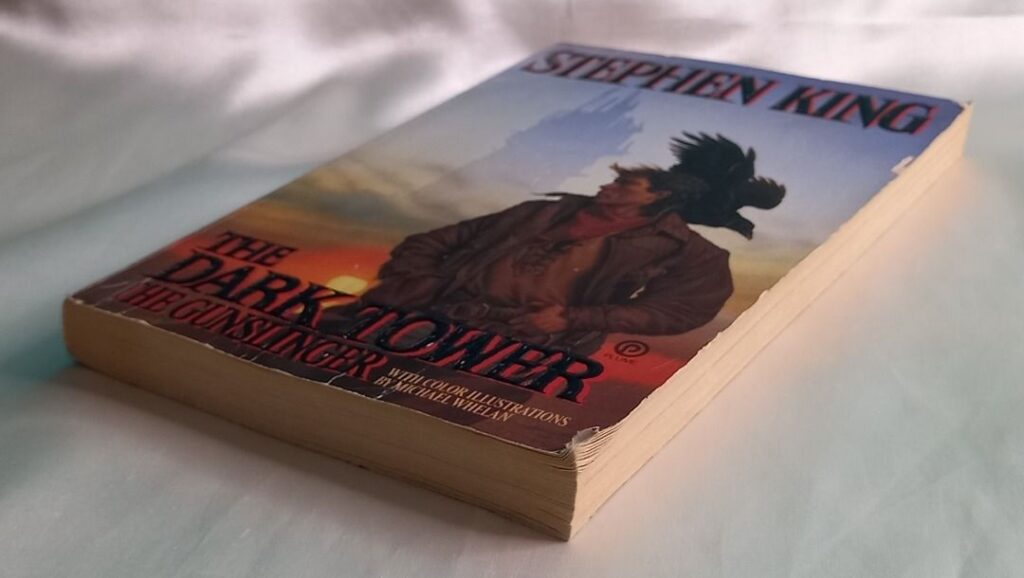
In the opening novel of Stephen King’s Dark Tower series, we are introduced to Roland Deschain of Gilead, the last Gunslinger, in a world that echoes a post-apocalyptic Wild West. Roland is on a quest to find the Dark Tower, a mythical structure that’s at the nexus of time and space.
His primary antagonist is the mysterious man in black, also known as Walter o’Dim, who Roland pursues across a desolate landscape. Roland encounters a boy named Jake from a different time and place (New York City in the 1970s). Jake joins Roland on his journey but tragically dies when Roland chooses his obsession with reaching the Dark Tower over saving the boy’s life.
The book ends with a cryptic palaver between Roland and the man in black, who reveals some shocking truths about the universe before dying.
2. The Drawing of the Three (1987)
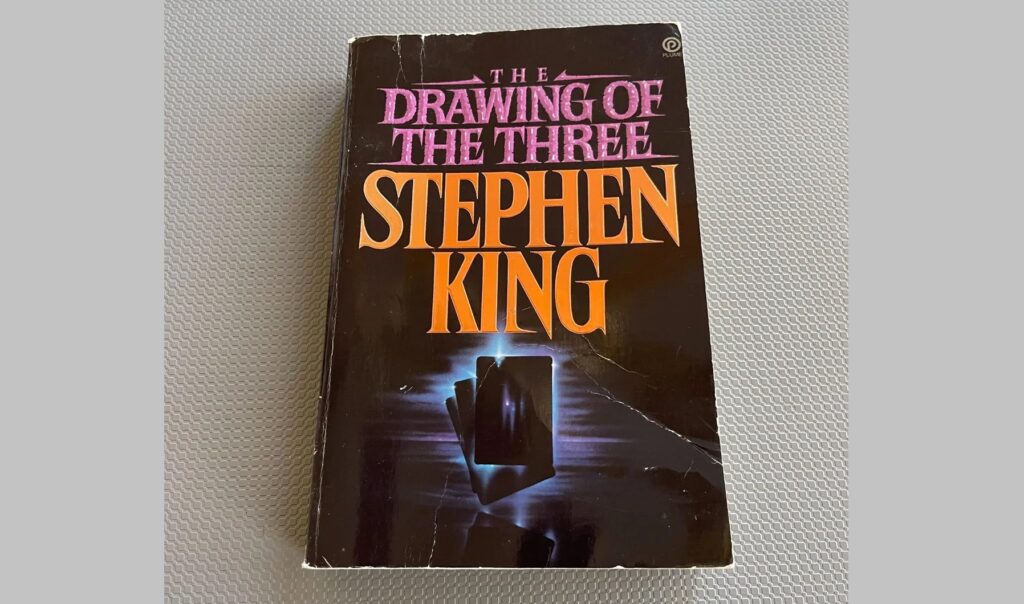
The second book picks up shortly after the first, with Roland on a beach where he is attacked by “lobstrosities” and loses several fingers. These wounds and a subsequent infection weaken Roland considerably. He discovers three magical doors on this beach, which lead him to different time periods in New York City.
Through these doors, he ‘draws’ two people who will become integral members of his ka-tet, a group bound together by fate: Eddie Dean, a drug addict from 1987, and Odetta Holmes, a wheelchair-bound civil rights activist from 1964 who harbors a violent second personality named Detta Walker.
After intense struggles, Eddie overcomes his addiction, and Odetta and Detta merge into a single personality, Susannah. Roland also briefly draws a serial killer named Jack Mort, who is revealed to be responsible for Jake’s initial death and Odetta’s paralysis.
3. The Waste Lands (1991)
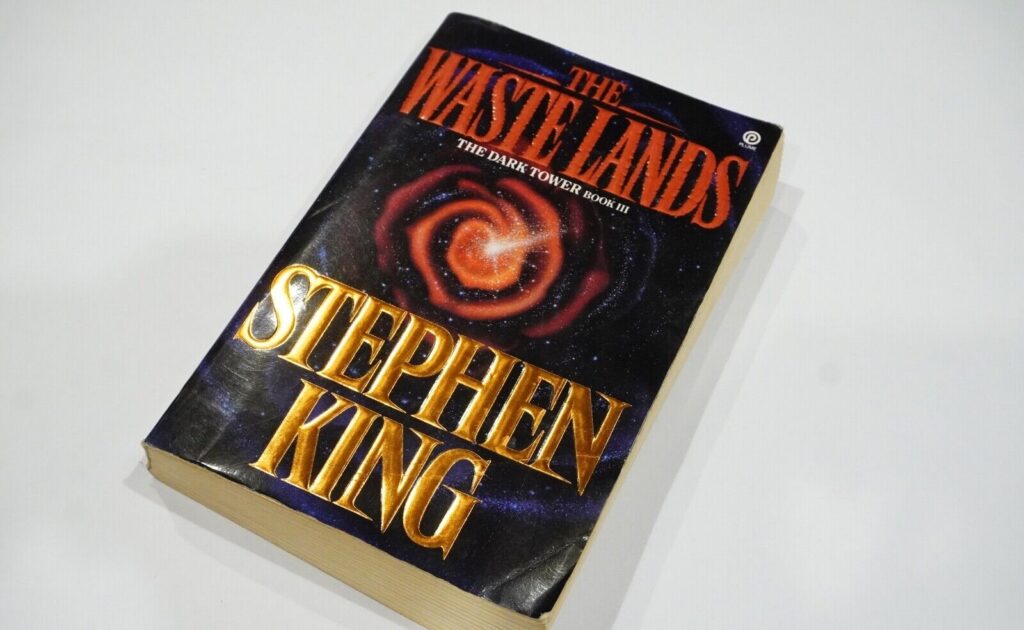
The third novel in the series starts with Roland and his ka-tet training and preparing for the journey to the Dark Tower. Roland is becoming mentally unstable due to a temporal paradox involving Jake, who is alive in his world and yet holds memories of dying in Roland’s.
To resolve this paradox, Roland and his ka-tet manage to draw Jake into their world, and in doing so, heal Roland’s mind. Jake comes with a pet bumbler (a creature resembling a small raccoon) named Oy. The group then ventures into the decaying city of Lud. After surviving its various dangers, they use an ancient monorail system, Blaine the Mono, to escape.
However, Blaine is insane and demands they engage him in a riddle contest for their survival.
4. Wizard and Glass (1997)
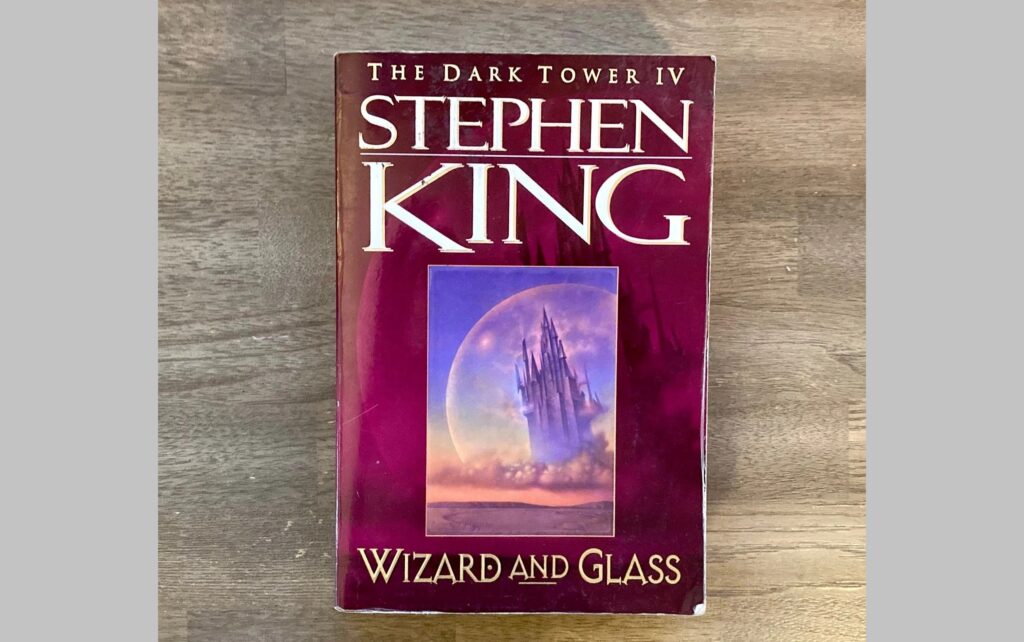
Much of the fourth book is a flashback to Roland’s youth. After winning the deadly riddling contest with Blaine, Roland tells his companions the tragic story of his first love. He recounts a mission with his friends Alain and Cuthbert to the town of Hambry in the Barony of Mejis, where he fell in love with a young woman named Susan Delgado.
Despite their love, forces conspire against them, and Susan ultimately dies as a result of a brutal town ritual, deeply traumatizing Roland. The story provides profound insights into Roland’s character and lays the groundwork for his relentless pursuit of the Dark Tower.
The book ends in the present, with the ka-tet leaving the Emerald City (a Wizard of Oz-like illusion) and setting out for the Calla Bryn Sturgis, setting the stage for the next book.
5. Wolves of the Calla (2003)
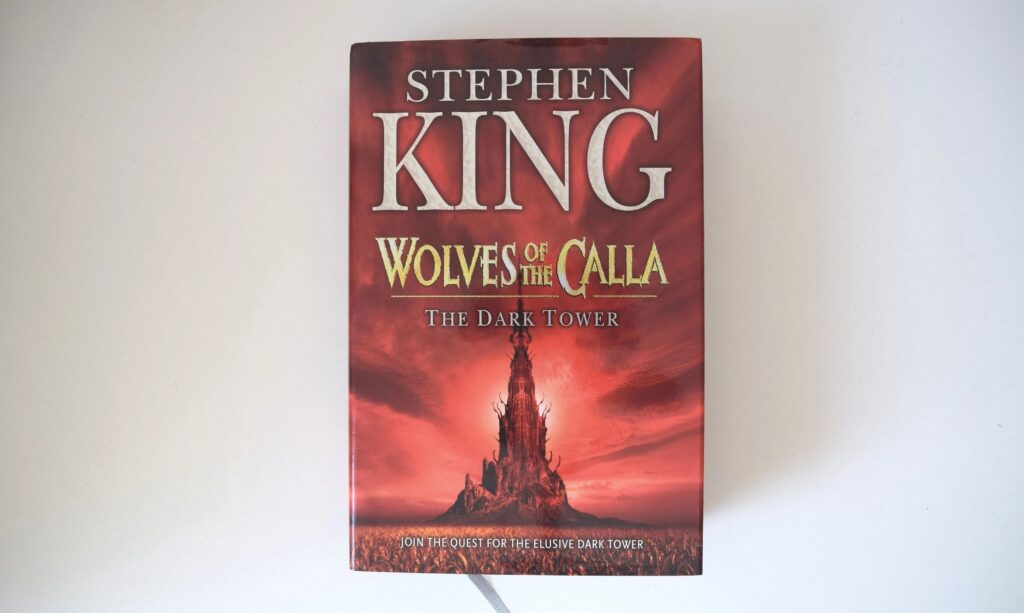
The fifth book sees Roland and his ka-tet arrive in the farming town of Calla Bryn Sturgis. The community is being terrorized by the “Wolves” – raiders from Thunderclap who abduct one twin from each set in the town every generation, returning them later mentally and physically impaired. Roland and his group agree to help the townsfolk fight these Wolves.
Meanwhile, through a magical door, Father Callahan from ‘Salem’s Lot enters the story, adding to the depth of King’s interconnected literary universe. He joins the group and shares his own haunted past involving vampires.
At the same time, the ka-tet must deal with a threat in 1977 New York City: the rose, a representation of the Dark Tower in this world, is in danger of being destroyed. The group manages to protect it by buying the vacant lot on which it grows. The book culminates in a successful, albeit costly, battle against the Wolves.
6. Song of Susannah (2004)
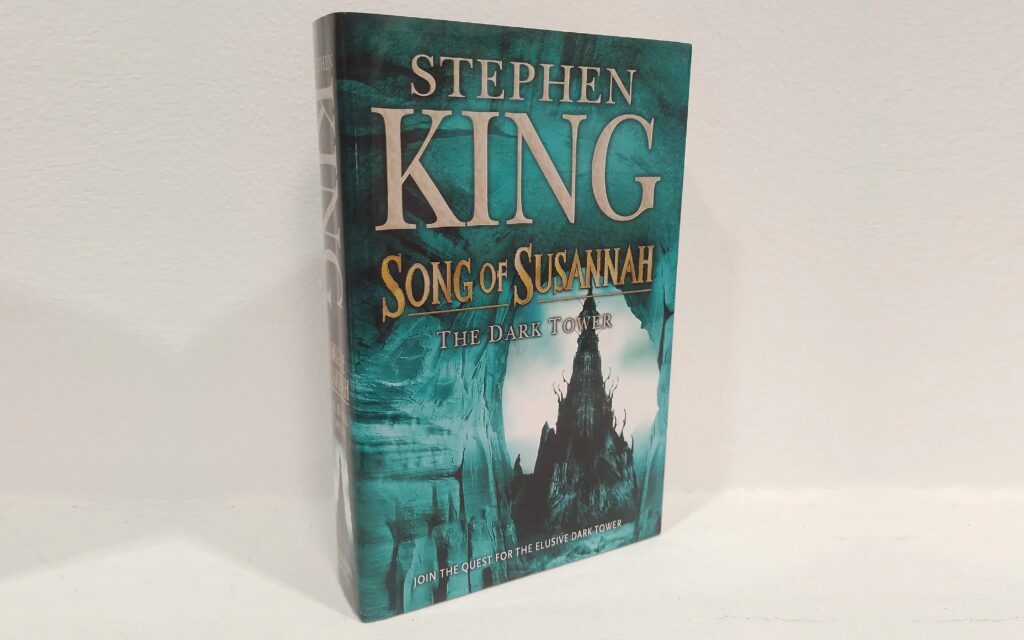
In the sixth book, the narrative splits between Susannah, who’s been taken over by a demonic entity, Mia, and the rest of the ka-tet. Mia takes control of Susannah’s body to give birth to her child, a creature feared to bring destruction. She transports herself to 1999, New York, using Black Thirteen, the most dangerous of Maerlyn’s Rainbow, a set of magical artifacts.
Meanwhile, Roland, Eddie, and Jake travel to Maine in 1977 to seek the assistance of Calvin Tower and to confront Stephen King himself, who is revealed to be a pivotal character within the series. They learn that King is a conduit for the story of the Dark Tower, and his life must be protected at all costs.
The book ends with a cliffhanger: Susannah/Mia about to give birth, and an ominous note about Stephen King’s impending death.
7. The Dark Tower (2004)
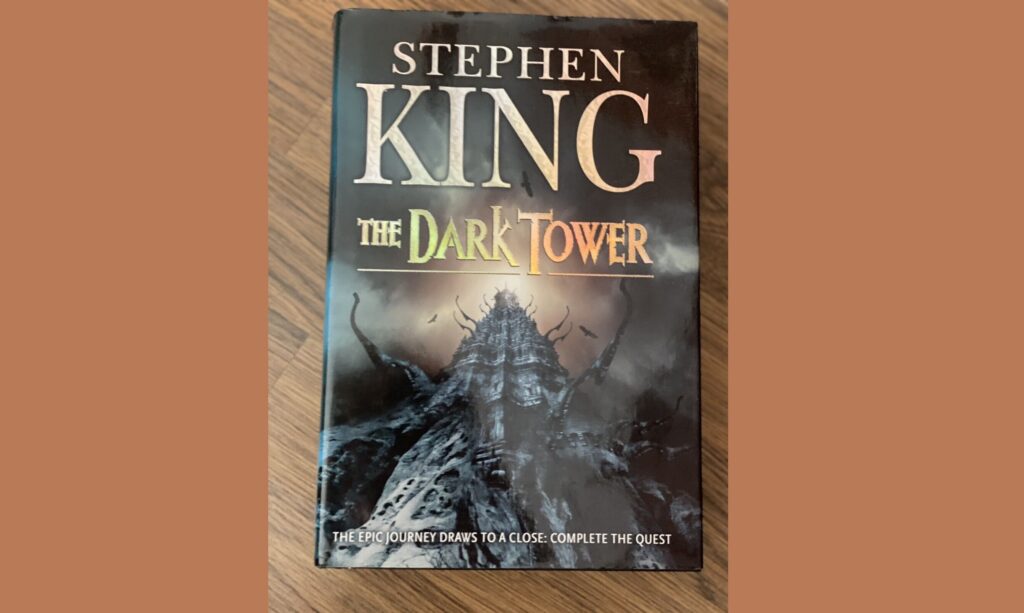
The final book in the main series sees the culmination of Roland’s quest. Eddie is fatally shot in a confrontation in Maine but manages to secure the vacant lot containing the rose. Before dying, he warns Roland of Susannah’s potential betrayal. Susannah, after Mia’s child (Mordred) is born, escapes and reunites with Roland and Jake.
Mordred, half-human, half-spider, kills and consumes Walter o’Dim. Jake sacrifices his life to save Stephen King from being hit by a van, and Oy dies heroically in a later battle. Roland and Susannah journey to the tower, but Susannah chooses to leave Roland, going to an alternate New York where she reunites with alternate versions of Eddie and Jake.
Roland, alone, proceeds to the Dark Tower. He ascends and finds himself back in the desert from the first book, but this time with the Horn of Eld, indicating a change in the cycle.
8. The Wind Through the Keyhole (2012)
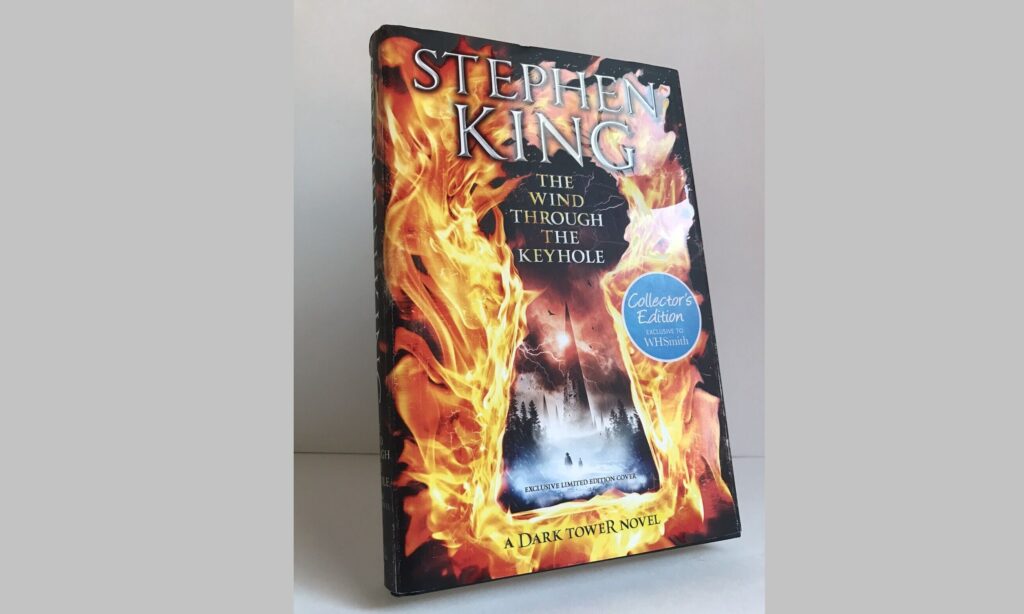
Published after the series’ conclusion, this novel is a detour taking place between the fourth and fifth books. During a storm, Roland tells his ka-tet a story from his past, involving his pursuit of a shape-shifting serial killer. Within this narrative, young Roland relates a fairy tale, “The Wind Through the Keyhole,” to a frightened boy.
The fairy tale is a standalone story about a young boy named Tim, his quest to save his mother, and his encounters with a dangerous magical world. While not advancing the plot of the overall series, this novel provides readers with a deeper understanding of Roland’s character and the world of the Dark Tower.
What is the best way to read The Dark Tower series?
The best way to read The Dark Tower series largely depends on personal preference. Some readers prefer the publication order, beginning with “The Gunslinger” and ending with “The Wind Through the Keyhole”, despite it being a midquel published last.
This method enables readers to experience the series as it was initially presented to the public, and one can witness the evolution of King’s writing style over the decades it took to complete the series.
Alternatively, some readers prefer chronological order, reading “The Wind Through the Keyhole” between “Wizard and Glass” and “Wolves of the Calla” since the narrative fits there chronologically.
This approach provides a smoother continuity of the story but loses the surprise and intrigue of a new Dark Tower novel appearing eight years after the series conclusion.
Should I read The Dark Tower first?
If you’re referring to “The Dark Tower” as the last book of the main series, it would be ill-advised to read it first. As the culmination of Roland’s journey, it contains major resolutions to the story arcs developed in the previous books and would be highly confusing without the context provided by the preceding novels.
Expert Tip: Therefore, it is recommended to read the series in either publication or chronological order, both of which place “The Dark Tower” towards the end.
Can you read The Dark Tower series by itself?
Yes, The Dark Tower series can be read as a standalone series. While it does connect to many of King’s other works, creating a sort of “Stephen King universe,” one does not need to have read his other books to understand and enjoy The Dark Tower.
The series is self-contained, and any references or connections to other works are usually treated as Easter eggs for dedicated King fans. They add layers to the narrative but are not essential to understand the plot or the characters.
How many books are connected to The Dark Tower series?
Stephen King’s universe is remarkably interconnected, and many of his works tie into The Dark Tower series in some way. There are over 20 books outside of the main Dark Tower series that have links to it, whether they’re explicit references, shared characters, or thematic connections.
Some of the more directly connected books include ‘Salem’s Lot, The Stand, The Eyes of the Dragon, Insomnia, Hearts in Atlantis, and Black House. These connections contribute to the richness of King’s multiverse and provide additional context to the overarching narrative of the Dark Tower series.
However, as stated earlier, it’s not necessary to read all these related works to appreciate The Dark Tower series.
What inspired Stephen King to create The Dark Tower series?
Stephen King has cited various influences that inspired him to write The Dark Tower series. One of the main sources of inspiration was Robert Browning’s poem, “Childe Roland to the Dark Tower Came”. King was struck by the image of a knight-like figure pursuing an endless quest, which formed the genesis of Roland’s character and his relentless pursuit of the Dark Tower.
Additionally, King was influenced by the “spaghetti” Western films of his youth, particularly those of director Sergio Leone. The stark landscapes and morally complex characters found in these films are reflected in King’s narrative.
Furthermore, King drew from a wide range of other inspirations, including J.R.R. Tolkien’s Middle-earth, Arthurian legends, and various elements from the horror and science fiction genres.
How does the Dark Tower series reflect King’s wider body of work?
The Dark Tower series acts as a lynchpin that unifies much of King’s extensive literary universe. Various characters, events, and locations from King’s other books make appearances or are referenced in the series, creating a sense of interconnectedness across his works. For instance, Father Callahan from ‘Salem’s Lot becomes a central character in later Dark Tower books.
Moreover, the concept of the multiverse and the Dark Tower as a linchpin holding these universes together reflects the diverse genres and styles King has written in, from horror to fantasy to crime. The series encapsulates the breadth of his imagination and storytelling prowess.
What is the significance of the ‘ka-tet’ in The Dark Tower series?
The concept of the ‘ka-tet’ is a crucial element in The Dark Tower series. Derived from the fictional language of High Speech, ‘ka-tet’ refers to a group of people bound together by ka, or fate. In the series, Roland’s ka-tet includes Eddie, Susannah, Jake, and Oy, and their relationships deepen as they face various trials on their journey to the Dark Tower.
This concept speaks to themes of destiny, friendship, and sacrifice that permeate the series. The dynamic within the ka-tet also provides much of the series’ emotional depth, as the characters grow and change through their shared experiences.
How does The Dark Tower series explore the concept of good versus evil?
Like many of King’s works, The Dark Tower series delves into the eternal struggle between good and evil, though it often blurs the lines between the two. The series’ protagonist, Roland, isn’t a traditional hero. He’s deeply flawed, and his obsession with reaching the Dark Tower leads him to make morally dubious decisions, such as sacrificing Jake in “The Gunslinger”.
Conversely, the antagonists, like the Man in Black, while primarily serving the role of villains, are complex characters with their own motivations. The series also presents the Dark Tower itself as a symbol of both creation and destruction, further complicating the good versus evil dichotomy. These nuances offer a more complex and mature exploration of the theme.
The Dark Tower series incorporates several themes and concepts from the Western genre. The protagonist, Roland, embodies the archetypal Western hero, a lone gunslinger traversing a desolate landscape, driven by a personal code of honor. The setting of Mid-World bears resemblance to the Wild West, with its wide-open spaces, desolate towns, and lawlessness.
The narrative frequently centers on traditional Western themes such as frontier justice, survival, and the conflict between civilization and wilderness. The series, however, reimagines these elements within a fantastical, post-apocalyptic framework, creating a unique blend of genres that King has termed a ‘fantasy-horror-western’.
How does King use the narrative device of the story-within-a-story in the series?
Stephen King employs the narrative device of the story-within-a-story effectively in The Dark Tower series. This is seen most prominently in “Wizard and Glass” and “The Wind Through the Keyhole”, where Roland tells tales from his past to his ka-tet. These inner stories serve multiple purposes.
They provide backstory, helping to flesh out Roland’s character and the world of the Dark Tower. They also introduce new characters and plotlines, enriching the overall narrative. This narrative structure creates layers of storytelling, enhancing the epic feel of the series.
What role does fate, or ‘ka’, play in the narrative of The Dark Tower series?
‘Ka’, or fate, is a pivotal concept in the series and shapes much of the narrative. Roland and his ka-tet are bound together by ka, and their actions and the events they encounter are often attributed to it. This concept introduces a sense of fatalism into the series, implying that certain events are destined to occur regardless of the characters’ choices.
However, the series also explores the tension between fate and free will. Despite the influence of ka, the characters often struggle against their perceived destinies, adding depth and complexity to their character arcs.
Quick Fact: The cyclical nature of Roland’s quest, as revealed in the final book, also ties into this theme, suggesting that fate may be a wheel, repeating patterns until lessons are learned.
How does Stephen King’s writing style contribute to the unique feel of The Dark Tower series?
King’s writing style significantly contributes to the unique ambiance and depth of The Dark Tower series. Known for his vivid descriptions and deep character development, King uses these strengths to build the world of the Dark Tower.
His detailed depictions of the environments make Mid-World come alive in the reader’s mind, from desolate deserts to eerie ruins. Furthermore, his talent for creating complex, believable characters adds layers of emotional depth to the narrative. Even minor characters are fleshed out, and protagonists evolve considerably throughout the series.
King’s seamless blend of different genres – fantasy, western, horror, and science fiction – also creates a unique narrative tone, setting the Dark Tower series apart from traditional genre fiction.
What role does the theme of sacrifice play in The Dark Tower series?
The theme of sacrifice is integral to the Dark Tower series. Throughout his quest, Roland makes numerous sacrifices to reach the Dark Tower, starting with his decision to let Jake die in the first book. This sets the tone for Roland’s character a man so obsessed with his quest that he is willing to sacrifice those he loves.
This theme recurs throughout the series, testing the bonds of the ka-tet and shaping the narrative’s moral complexity. It culminates in the ultimate sacrifice Roland makes in reaching the Dark Tower, indicating the profound cost of his obsession.
How does King utilize elements of horror in The Dark Tower series?
While the Dark Tower series is not a horror story in the traditional sense, King integrates elements of horror to heighten tension and engage readers. From monstrous creatures such as the slow mutants and the Wolves to eerie settings like the haunted town of Tull, King uses horror elements to create a sense of dread and unease.
Moreover, the series explores psychological horror, focusing on the characters’ inner fears and conflicts. For example, the character of Jack Mort in “The Drawing of the Three” introduces elements of psychological horror, as does Roland’s internal struggle with his obsession with the Dark Tower.
How does The Dark Tower series address the concept of reality and multiple universes?
The Dark Tower series delves into the concept of multiple universes, suggesting that numerous realities exist concurrently. These realities, or ‘levels of the Tower’, range from Roland’s Mid-World to various versions of Earth, each with its unique characters and circumstances. The Dark Tower itself is depicted as the nexus of these realities.
This exploration of multiverse theory allows King to weave intricate connections between The Dark Tower series and his other works. It also raises philosophical questions about the nature of reality, the potential of infinite worlds, and the interconnectedness of all things.
What makes the Dark Tower a symbolically important element in the series?
The Dark Tower is a central symbolic element in the series, representing various abstract concepts. It’s portrayed as the nexus of all universes and realities, symbolizing the interconnectedness of existence. Its dark and imposing imagery often signifies mystery, the unknown, and the human pursuit of knowledge or obsession.
It also embodies the concepts of creation and destruction, as it’s said to maintain the stability of all realities, yet its fall would lead to chaos. This multifaceted symbolism gives the Dark Tower a profound significance beyond its role as the physical destination of Roland’s quest.
How is the element of time manipulation used in The Dark Tower series?
Time manipulation plays a significant role in the narrative of The Dark Tower series. The concept of ‘ka’ imbues the series with a sense of fatalism and cyclicality. Most notably, the series finale reveals that Roland’s journey is a repeating cycle, suggesting a loop or spiral in time.
The use of doors or portals to travel between different times and realities also manipulates the traditional linear progression of time. This adds complexity to the narrative, and it offers King the opportunity to explore themes like destiny, fate, and the potential for change.
How does The Dark Tower series reflect on Stephen King’s personal life and experiences?
King often incorporates aspects of his personal life into his writing, and The Dark Tower series is no exception. The most prominent example is King’s inclusion of himself as a character in the later books of the series.
The fictional King is an unwitting conduit for the story of the Dark Tower, implying a meta-commentary on the process of storytelling and the relationship between an author and his work.
Furthermore, the series was written over several decades, and it reflects different stages in King’s life, from his early career ambitions to his near-fatal accident in 1999, and his subsequent reflections on mortality and legacy.
Conclusion
The Dark Tower series represents an epic journey in the realm of literature as well as in the life of its author, Stephen King. Over the span of several decades and eight books, King has woven a tale that interconnects various genres and explores themes of destiny, sacrifice, the nature of reality, and the thin line between good and evil.
His unique blend of Western, fantasy, horror, and science fiction, coupled with deep character development and intricate plot twists, has resulted in a series that remains a cornerstone of modern speculative fiction.
Whether you’re a longtime fan of Stephen King or a newcomer to his multiverse, The Dark Tower series offers a deeply engaging and thought-provoking reading experience.
